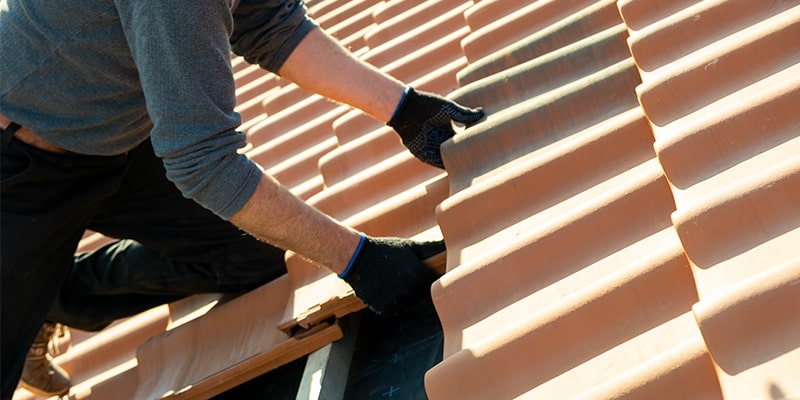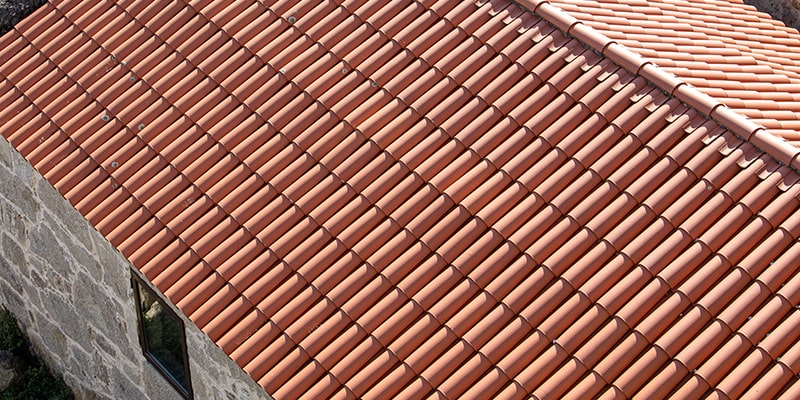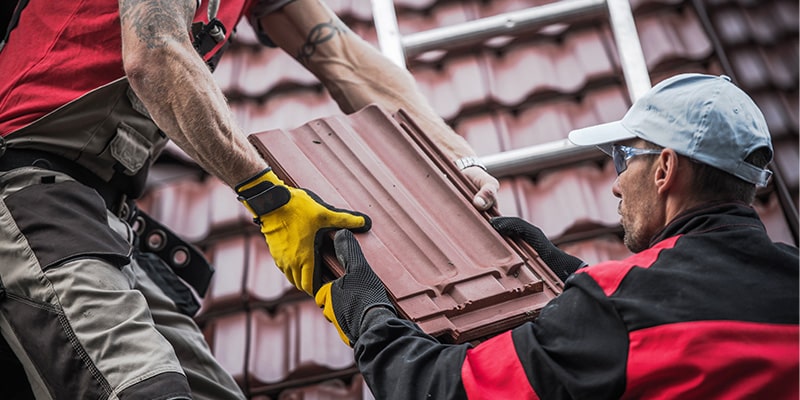Which Tiles Are Best for My Roof: Concrete or Clay?

When renovating your roof, you want to make sure you do it right. Of course, you do- that’s why you’re here. With that being said: there are so many different options for tiles that it can sometimes be overwhelming.
Both clay and concrete have advantages and disadvantages- so how do you choose when you have so much to evaluate? Budget, roof type, and local styles are frequently factors in the selection. Although, there are others to consider, including the length of time you want to stay in the property and the general aesthetic you want.
Contents
- What to Consider Before You Start
- Concrete Tiles
- Clay Tiles
- Concrete Tiles Advantages
- Clay Tiles Advantages
- Concrete Tiles Disadvantages
- Clay Tiles Disadvantages
What to Consider Before You Start
Unfortunately, some factors will be out of your control when it comes to choosing your roofing tiles. When making your selection, you may need to examine the roofing materials used on neighbouring houses. It is important, after all, to consider the traditional appearance of roofing in your local area since this may be a planning requirement to ensure that the types of roof tiles match the aesthetic of the area.
The form and pitch of your roof will also largely impact your tile selection; some tiles won’t be compatible with low-pitch roofing, and some won’t be compatible with a high-pitch roof. It is important, therefore, to establish the types of tiles you wish to use as a priority before looking at colour and design. Ultimately, what you want is a stunning roof that compliments its surroundings; it is important for the roof to work with your exterior walls and area.
Budget will always impact the scope of your project. For this reason, it’s important to go into your roofing project with an open mind. Even if the budget does not allow for your first choice, you may still find slate tiles of appropriate quality to match the requirement and stay inside your budget.
Concrete Tiles
Concrete tiles are manufactured in a comparable way to conventional concrete: with sand, cement, and water. This mixture is then moulded under intense heat and pressure into a variety of tile shapes:
|
High Profile |
Large Curvature |
|
Low Profile |
Small Curvature |
|
Flat |
No Curvature |

Whilst the finished surface of concrete doesn’t require painting thanks to concrete’s naturally neutral aesthetic (it compliments virtually any décor), it can also be painted for a more unique individualised appearance and made to resemble different forms of roofing, such as clay, wood shake, slate, or stone tiles.
Clay Tiles
Clay roof tiles are formed by baking sculpted clay, whilst the density is influenced by how long and at what temperature the tiles are heated. There are several different forms that these tiles can take:
|
Mission Tiles |
Curved barrels on the top and bottom/curved covers with flat pans beneath. |
|
Spanish Tiles |
S-shape, one-piece design that is easier to install. |
|
French Tiles |
Feature dual flutes that offer great drainage/ textured aesthetic. |
|
Flat Tiles |
Channel on one side, lip on the other, fit together like puzzle pieces. Can also overlap. |

As clay is baked at higher temperatures to aid in the bonding of the colour, it ensures that this colouring will not dim or falter over time. These roofing tiles come in a variety of colours, including white, yellow, orange, and brown. You’ll probably already know of the staple shade terra-cotta which, like clay, is a particularly versatile choice – able to blend in well with almost any style of home.
Concrete Tiles Advantages
- Perfect for use in any climate
- Concrete tiles are exceptionally wind resilient
- Huge variety of colours and styling
- Energy efficient (great at deflecting heat in summer and retaining inside heat in winter)
- 20% cheaper than clay tiles
- Low maintenance
Clay Tiles Advantages
- Low water absorption rate (significantly lower capability to harness mould or moss)
- Lightweight & easy to handle
- Retains original colour for years, even when subjected to extreme weather
- Ceramic-finished clay often possess non-porous finishes (will not discolour nor stain over time)
- Both machine & hand made tiles provide wide range of high-end & budget friendly options
Concrete Tiles Disadvantages
- Not as water resistant as clay tiles (13% water absorption rating)
- Heavier & more difficult to handle versus clay tiles
- Can be more challenging to maintain
- Porous & more prone to staining and discolouration
- Only suited for roof constructions with a substantial level of reinforcement
Clay Tiles Disadvantages
- Clay tiles are more likely to crack and break in cold weather
- Clay tiles are approximately 20% more expensive than concrete
Final Thoughts
Ultimately, both tiles are a good choice - they both have a substantial lifespan, are both aesthetically pleasing and work wonders for new roofs. Even so, we would always recommend consult a specialist before bulk buying your tiles- it would be disastrous for you to break the bank buying tiles that don’t meet with some of the finer points of planning requirements.
It is important to also consider how long you’re staying in the property; any new roof will add significant value (as much as 63% according to Zopa), though clay tends to be the longer-term investment. Costing more initially, but also making you more when you come to sell.
Whatever you choose, you can have faith that our patient and knowledgeable customer care staff are here to assist you; offering experienced guidance to support you in selecting the right items for your next major project. Simply dial 01295 565 565 or start a chat using the convenient chat box below.